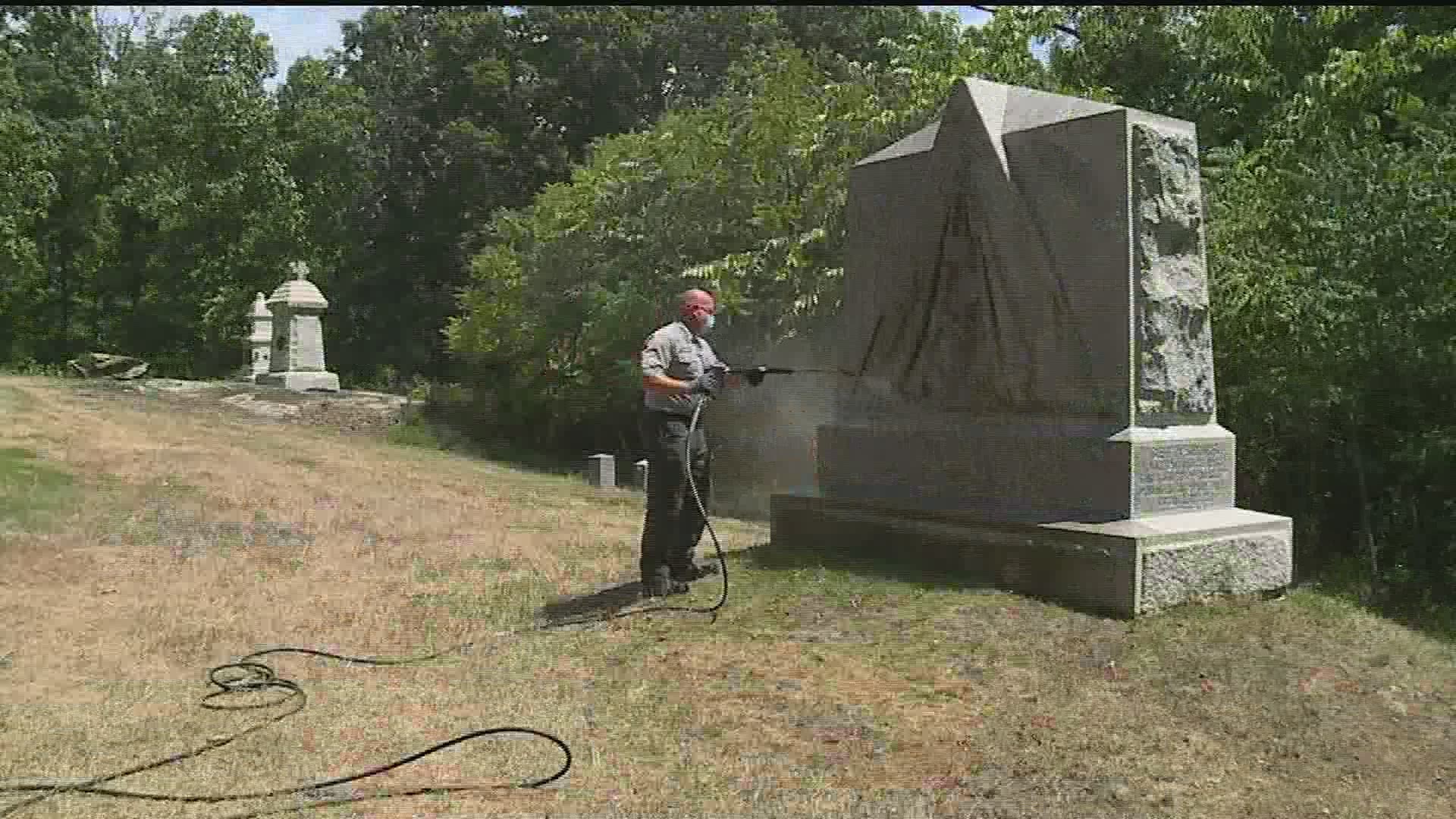GETTYSBURG, Pa. — The battle over whether to take down confederate monuments is a hot button issue right now in our country. At Gettysburg National Military Park, park officials say the monuments are here to stay.
Behind each of the 1,328 monuments, there is a story -- a tale of many men who fought and died on the grounds during the Battle of Gettsyburg -- and a preservationist, who works diligently to keep the history alive.
"There is a small but mighty army that goes out every day, and they work their hardest," explained Mark Cochran, a monument preservationist. "It's their passion, but they make sure that the history is preserved."
Cochran says it's a troop of half a dozen park employees, who work all throughout the year pressure washing and waxing each monument until it shines. Their tireless work ensures that the park remains a relic representing decades past.
"I would like to think that if somebody was teleported from 1860's Gettysburg, and they were plunked in the park they would have a pretty good idea of where they were," laughed Cochran.
Mark Cochran gave us an inside look at how the job is done. He describes the work as meditative.
"You're washing it, and you're getting your rhythm," he explained. "You're going back and forth, and you have to be careful, of course. You wouldn't want to knock anything off the monument."
When it comes to waxing the bronze pieces, he says there is always one spot somewhere that is missed. Cochran adds there is always a common enemy - slowly leaving its marks on the monuments
"Not necessarily insect damage, but it's definitely weather and time," responded Cochran, when asked about what damages the monuments the most.
When it comes to time, Mark has put in over 3,000 hours -- sweating in the heat, and now, doing so all while wearing a mask.
"When it's a hot day you have the bronze reflecting heat back at you," explained Cochran. "You have a hot torch, and you have the heat from the sun so there's a lot of sweating on summer days when you're waxing. Even though, I'm hot, I'm sweating, and I'm dirty, the work that I put in is one small part of being able to preserve that history."
Cochran feels privileged to call the battlefield his office -- an outdoor museum that he says is here to stay for many more years to come.
"The monuments here weren't placed after the fact or for different purposes," he stated. "They're here to commemorate those people who gave their lives and were away from home for years on end."
Officials say the monuments at Gettysburg National Military Park remain protected as it's an outdoor museum where history actually occurred.
According to the U.S. National Park Service or NPS, "Gettysburg National Military Park preserves, protects, and interprets one of the best marked battlefields in the world. Over 1,325 monuments, markers, and plaques, commemorate and memorialize the men who fought and died during the Battle of Gettysburg and continue to reflect how that battle has been remembered by different generations of Americans.
Many of these memorials honor southern states whose men served in the Confederate Army of Northern Virginia. These memorials, erected predominantly in the early and mid-20th century, are an important part of the cultural landscape."
According to its website, the National Park Service is committed to preserving memorials while also educating visitors holistically on their history. It believes a hallmark of American progress is the ability to learn from history. Regarding many commemorative works, including monuments, were authorized by Congress, according to the NPS. Other times, a monument may have preceded the establishment of a park, and thus could be considered a protected park resource and value. In either of these situations, legislation could be required to remove the monument, and the NPS may need to comply with Section 106 of the National Historic Preservation Act and the National Environmental Policy Act before removing a statue/memorial. Other monuments, while lacking legislative authorization, may have existed in parks long enough to qualify as historic features. You can read more on how the National Park Service interprets the monument on its website.

